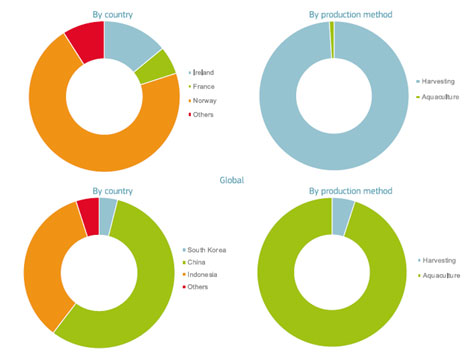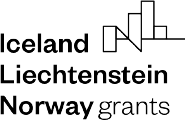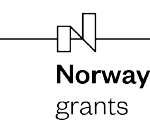This sub-sector represents one of the most important areas for the future of the Blue Economy.
For biotechnology, the Organization the Economic Co-operation and Development (OECD) is giving the following definition: “The application of science and technology to living organisms, as well as parts, products and models thereof, to alter living or materials for the production of knowledge, goods and services”(1). Marine Biotechnology, or also called Blue Biotechnology, uses resources from aquatic living organisms (fresh water and marine) to develop new commercially viable products or applications.
With the oceans covering 70% of the surface of the globe and hosting 99% of the biosphere, there is an unprecedented biodiversity in the oceans (2). It is estimated that up to 1 million of eukaryotic species, e.g., micro-algae, seaweed, fungi, fish, invertebrates such as starfish, or mollusks, and also hundreds of millions of prokaryotes, such as bacteria, live in the oceans. These organisms are used as a biomass or even more importantly, to be utilized as producers of different end-products or substances, such as e.g., pharmaceuticals, cosmetics, nutraceuticals, agrochemicals. This sub sector is very young and is currently being driven and developed through National and EU projects that support and encourage this vital research-intensive area. Overarching biotechnology sector is a thriving EU market umbrella sector, with many market applications. Apart from marine biotechnology, other known sub-sectors are red biotechnology (pharma), white biotechnology (industrial), green biotechnology (food and agricultural).
Marine biotechnology is a knowledge-intensive and highly specialized field. There are not many blue/marine biotechnology programs in Europe. In general courses at Bachelor and Master’s degree offer specialization in blue biotechnology, while some full specialized Master’s programs can be found in Europe. See a list of programs and individual courses available at northern Europe here (3). Programs in general biotechnology or marine biology are more common under-graduate fields study.
Among the most promising sub-sectors of marine biotechnology are algae. Alone the EU algal biomass sub-sector already (2018) employs over 14,000 people and has a value of EUR 1.69 billion, which includes research and development, equipment production and jobs in the larger supply chain that depend on output from the algae sector (4). In 2021, there were over 447 algae and spirulina producing units across 23 different countries of the EU (5).

From these, 57 % of the companies produced macroalgae and 43 % microalgae. France hosts the largest number of companies followed by Spain, Ireland, and Germany. In France, Spain, Portugal and the Netherlands, the number of macro- and microalgae producers is approximately equal. Algae production in Germany, Italy and Austria is dominated by microalgae while in Ireland and Denmark macroalgae production is dominant (7). Spirulina producers are not mapped yet, but based on JRC estimates, there are around 250 Spirulina farms operating in the EU of which approximately 150 are located in France. Survey results showed (2019) that (8) the macro and microalgae production sector is mainly based on small size enterprises with less than 20 employees each (79 % of the companies), working in mostly full-time According to the data collected, the macro and microalgae biomass producing sectors have been estimated to directly employ approximately 3,000 people.

The main applications of blue/marine biotechnology in the EU economy fall into four broad groups.
- In healthcare and pharmaceutical applications, biotechnology has led to the discovery and development of advanced medicines, therapies, diagnostics, and vaccines.
- In agriculture, livestock, veterinary products, and aquaculture, biotechnology has improved animal feed, produced vaccines for livestock, and improved diagnostics for detecting diseases such as BSE, foot and mouth disease, and salmonella.
- In industrial processes and manufacturing, biotechnology has led to the use of enzymes in the production of detergents, pulp and paper, textiles, and biomass.
- In nutraceuticals and food sector, marine biotechnology has led the biodiscovery of omega-3 & omega-6 oils derived from microalgae as well as carotenoids,
- and energy production, as through the use of micro-algae technology or algal biomass for biofuel.
Why action must be taken on EU level?
Research on marine biological diversity can let us develop new medicines or industrial enzymes that can work in extremal conditions, and which have great economical utility. It is estimated that in long term perspective this sector will create job offers for highly qualified professionals and open for them further career opportunities.<br /> We now can operate underwater technology that allows us to research oceans at depth and to sequence DNA to obtain a better knowledge from local forms of life. EU actions in such early notice with support from member-countries can provide proper conditions to stimulate economic growth, ease accessibility to competitive niche markets and prevent dangers to marine ecosystem.
The main applications of biotechnology in the EU economy fall into four broad groups.
- In healthcare and pharmaceutical applications, biotechnology has led to the discovery and development of advanced medicines, therapies, diagnostics, and vaccines.
- In agriculture, livestock, veterinary products, and aquaculture, biotechnology has improved animal feed, produced vaccines for livestock, and improved diagnostics for detecting diseases such as BSE, foot and mouth disease, and salmonella.
- In industrial processes and manufacturing, biotechnology has led to the use of enzymes in the production of detergents, pulp and paper, textiles, and biomass.
- In energy production, as through the use of micro-algae technology or algal biomass for biofuel.
Sources
1) https://www.oecd.org/sti/42833898.pdf
2) Appeltans et al. 2012; Curtis, Sloan, and Scannell 2002; Suttle 2013; as quoted in the World Bank and United Nations Department of Economic and Social Affairs. 2017. The Potential of the Blue Economy: Increasing Long-term Benefits of the Sustainable Use of Marine Resources for Small Island Developing States and Coastal Least Developed Countries. World Bank, Washington DC. As quoted in Arvaniti, E.; Schultz-Zehden, A.; Blümel, M.; Kaartokallio, H.; Luhtanen, A-M.; Tasdemir, D. (2019): Findings from the Alliance mentoring and accelerator programme, Baltic Blue Biotechnology Alliance project. SUBMARINER Network for Blue Growth. Berlin.
4) A new dataset on algae production in Europe
5) Current status of the algae production industry in Europe: an emerging sector of the Blue Bioeconomy
6) Algae production industry in Europe
7) Brief on algae biomass production, European Commission (2019a)
8) Commission Services based on a survey, as quoted at https://ec.europa.eu/maritimeaffairs/press/2020-blue-economy-report-blue-sectors-contribute-recovery-and-pave-way-eu-green-deal_en
9) https://publications.jrc.ec.europa.eu/repository/bitstream/JRC118214/kcb_brief_algae_biomass_production_online_version.pdf, Vasquez Calderon et al. (forthcoming). Status of the algae producing sector in Europe as quoted in “Brief on algae biomass production”
Useful Links
Definition of Marine Biotechnology
Marine biotechnology in horticulture
Marine biotechnology in animal husbandry
How do you become a marine biologist? | Earth Unplugged
MARINE BIOLOGY JOBS/CAREERS outside academia



